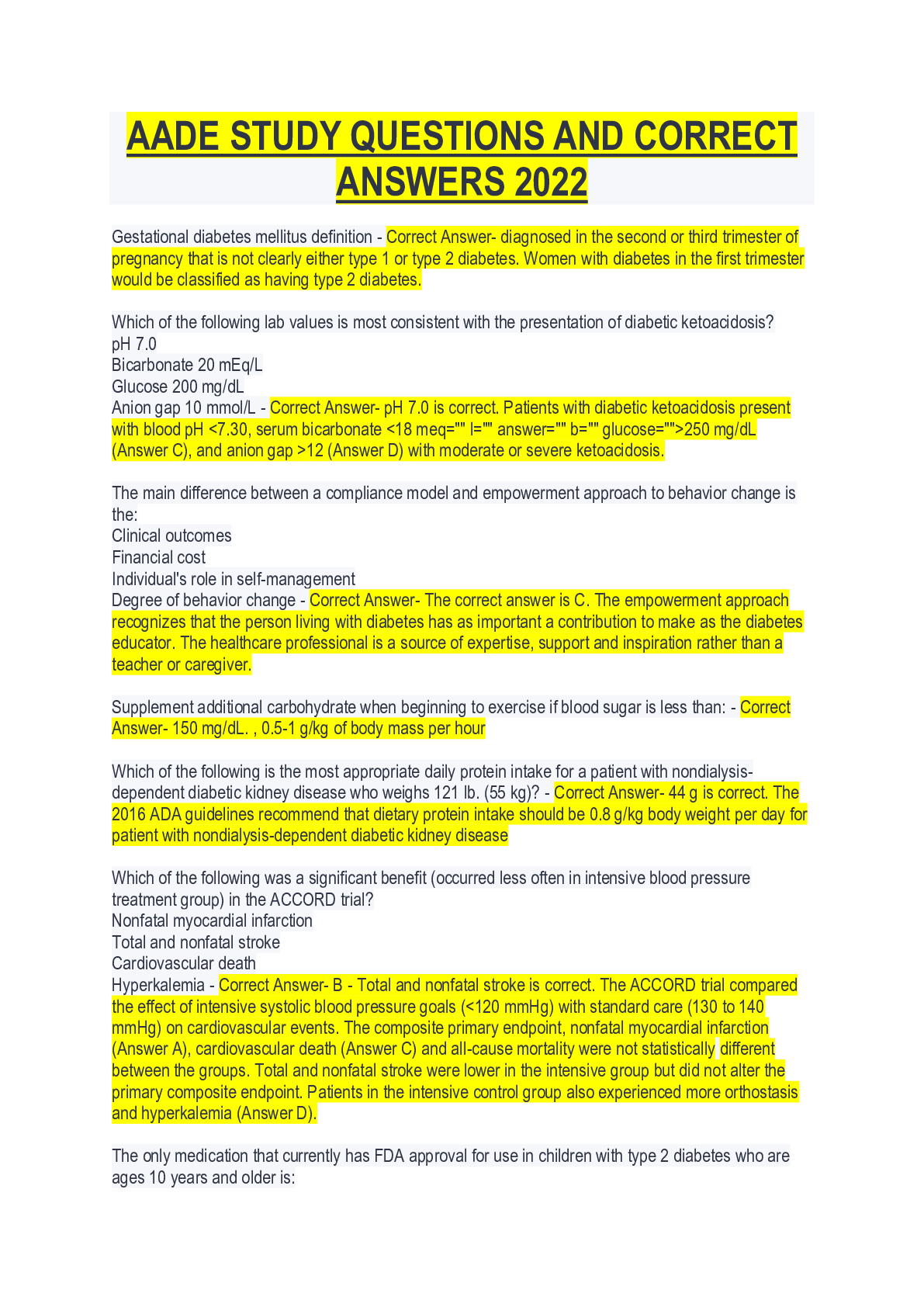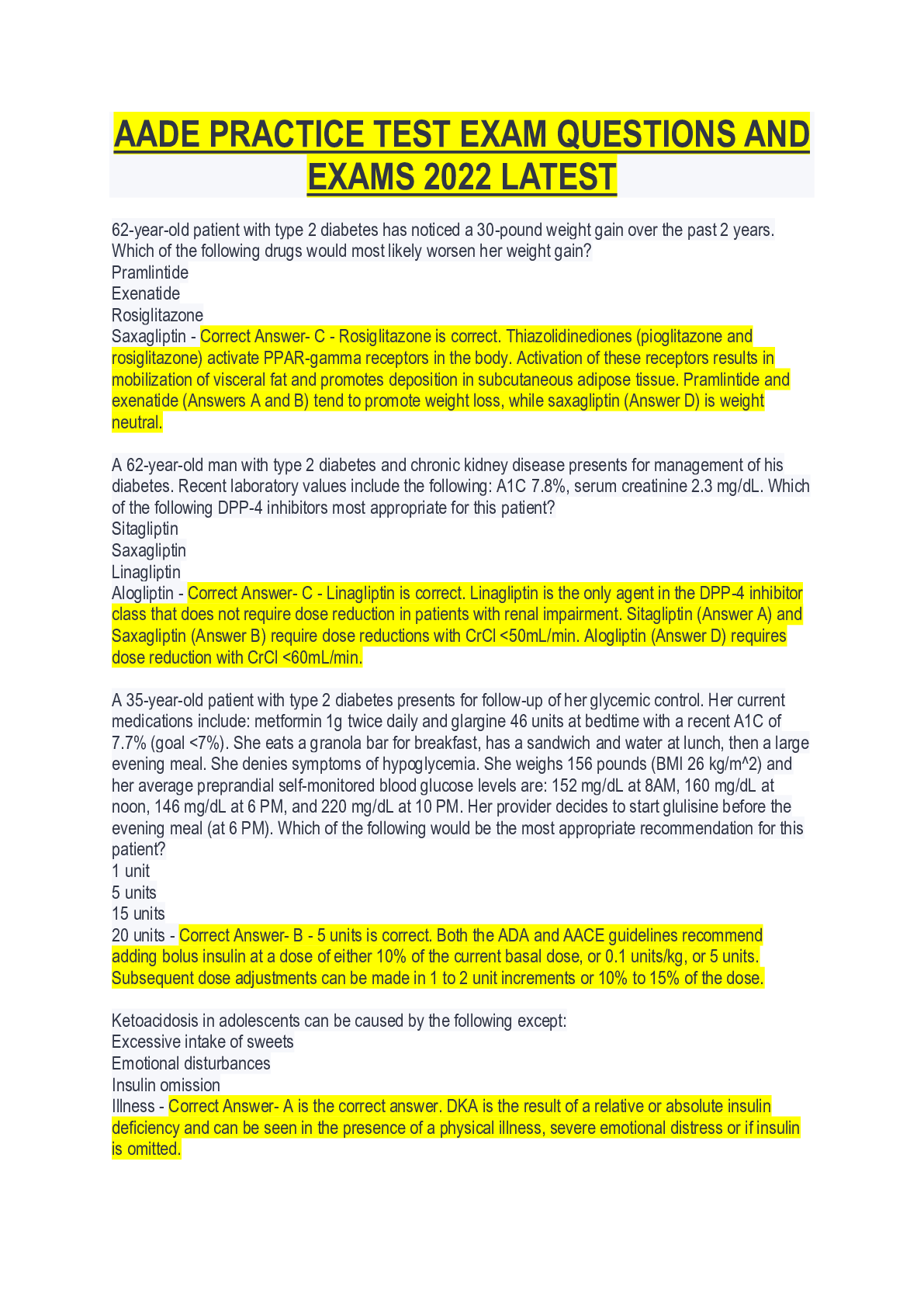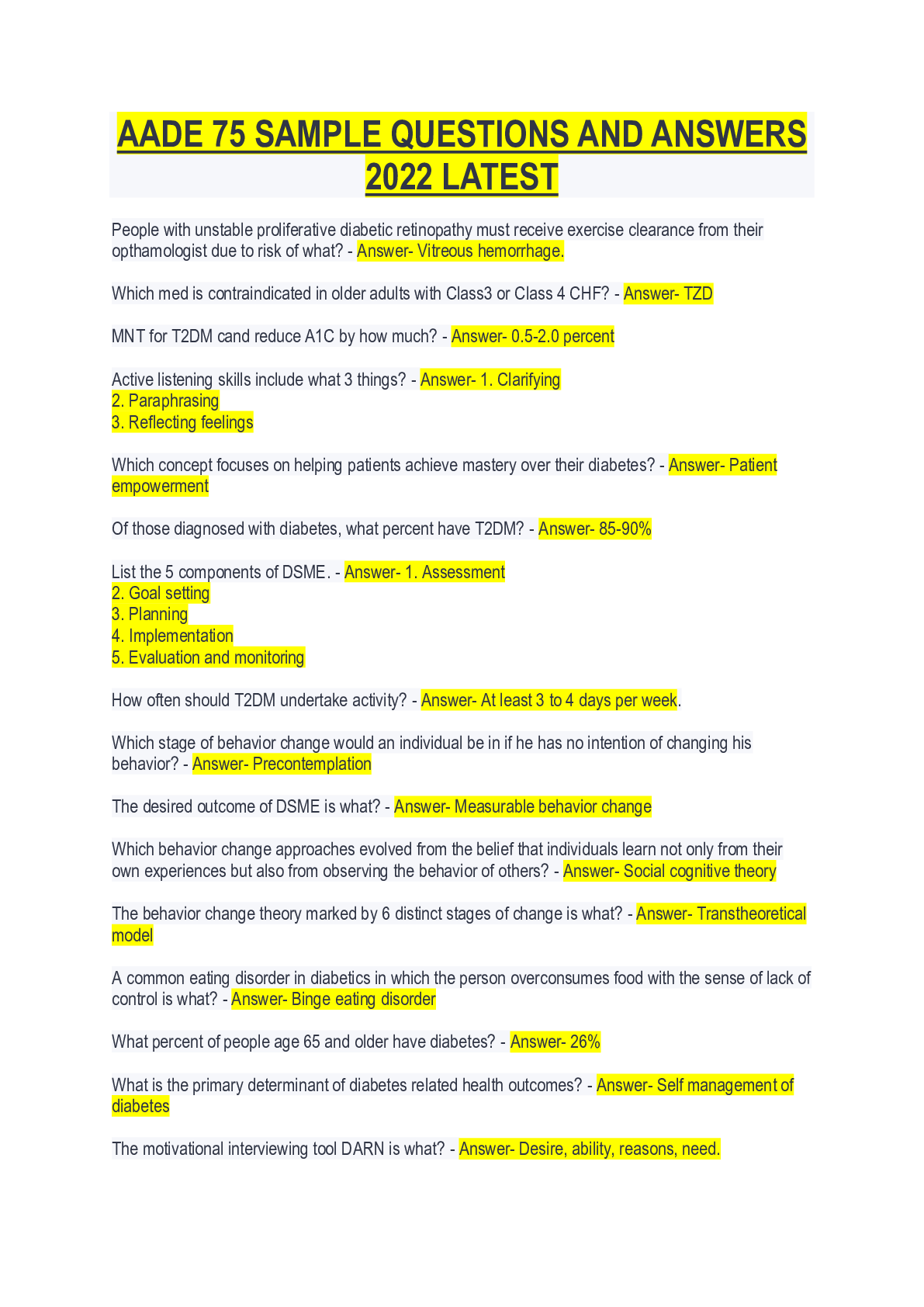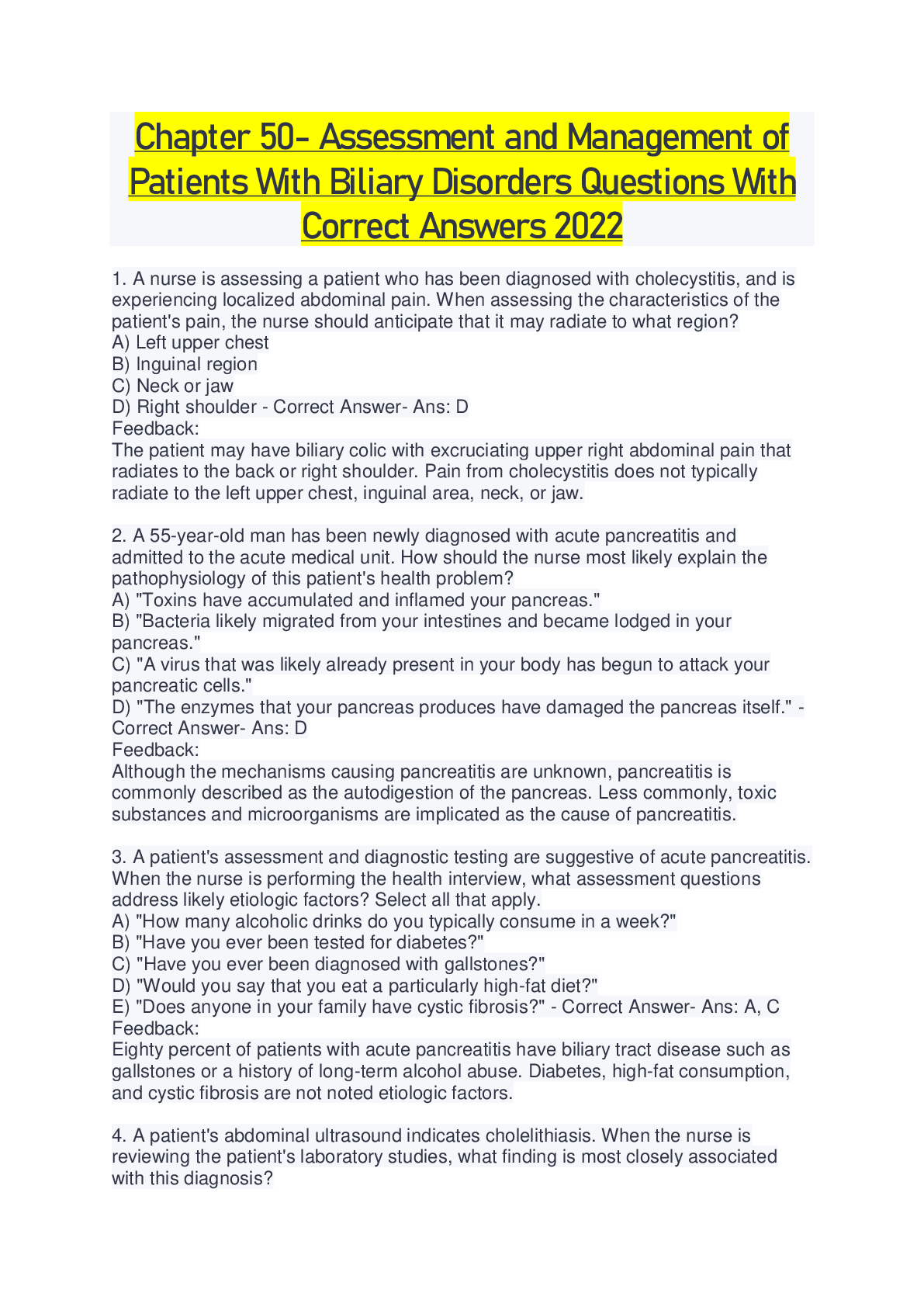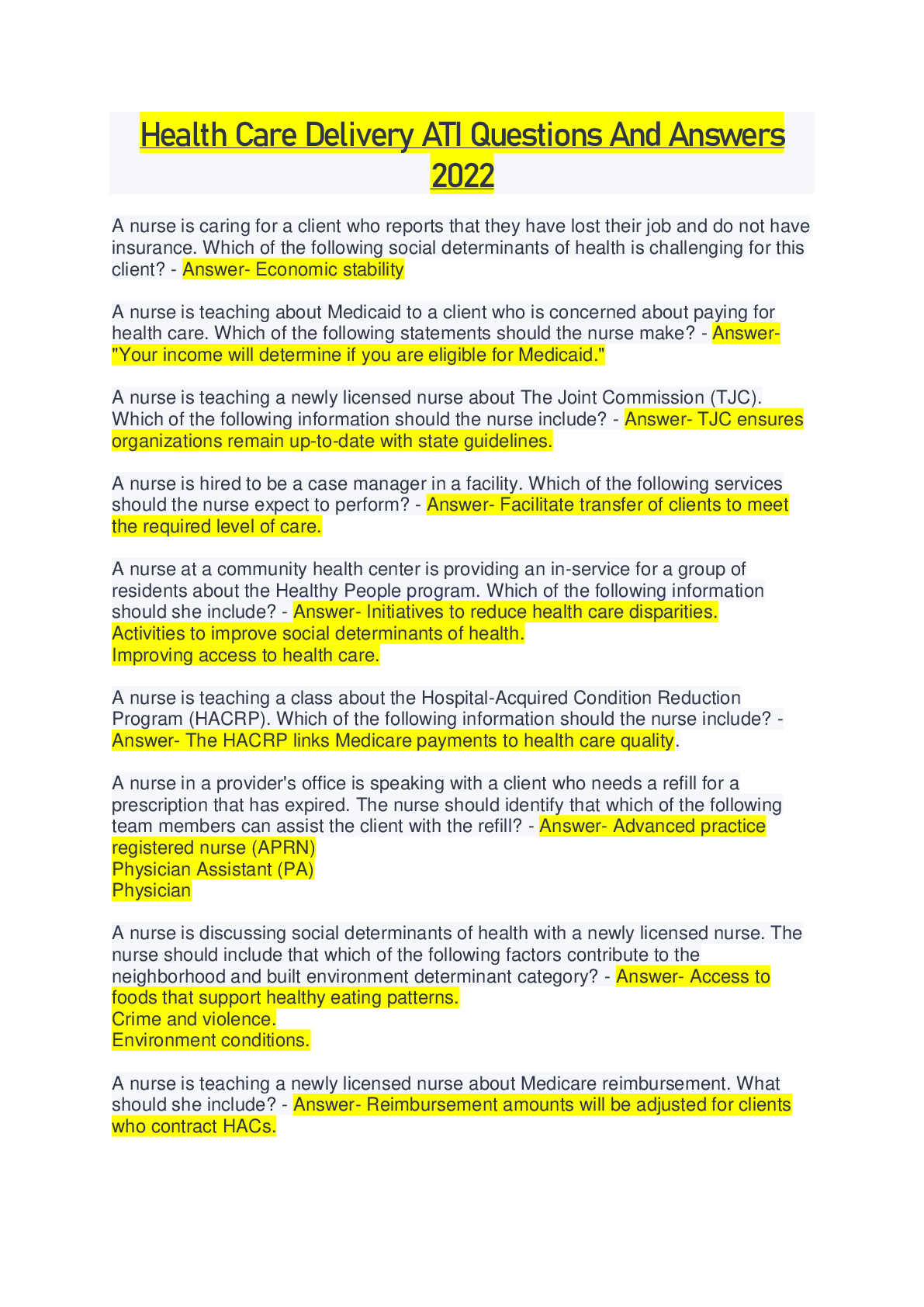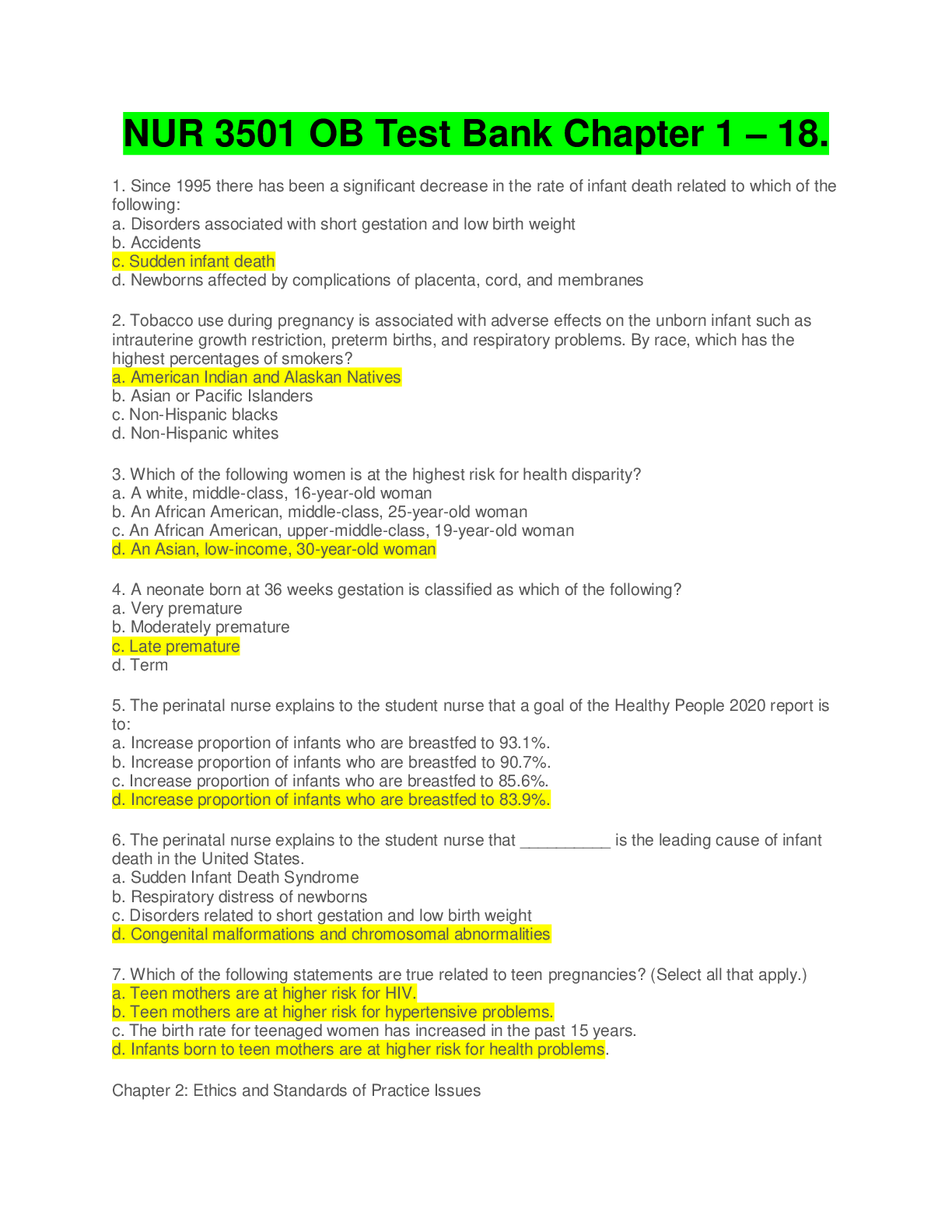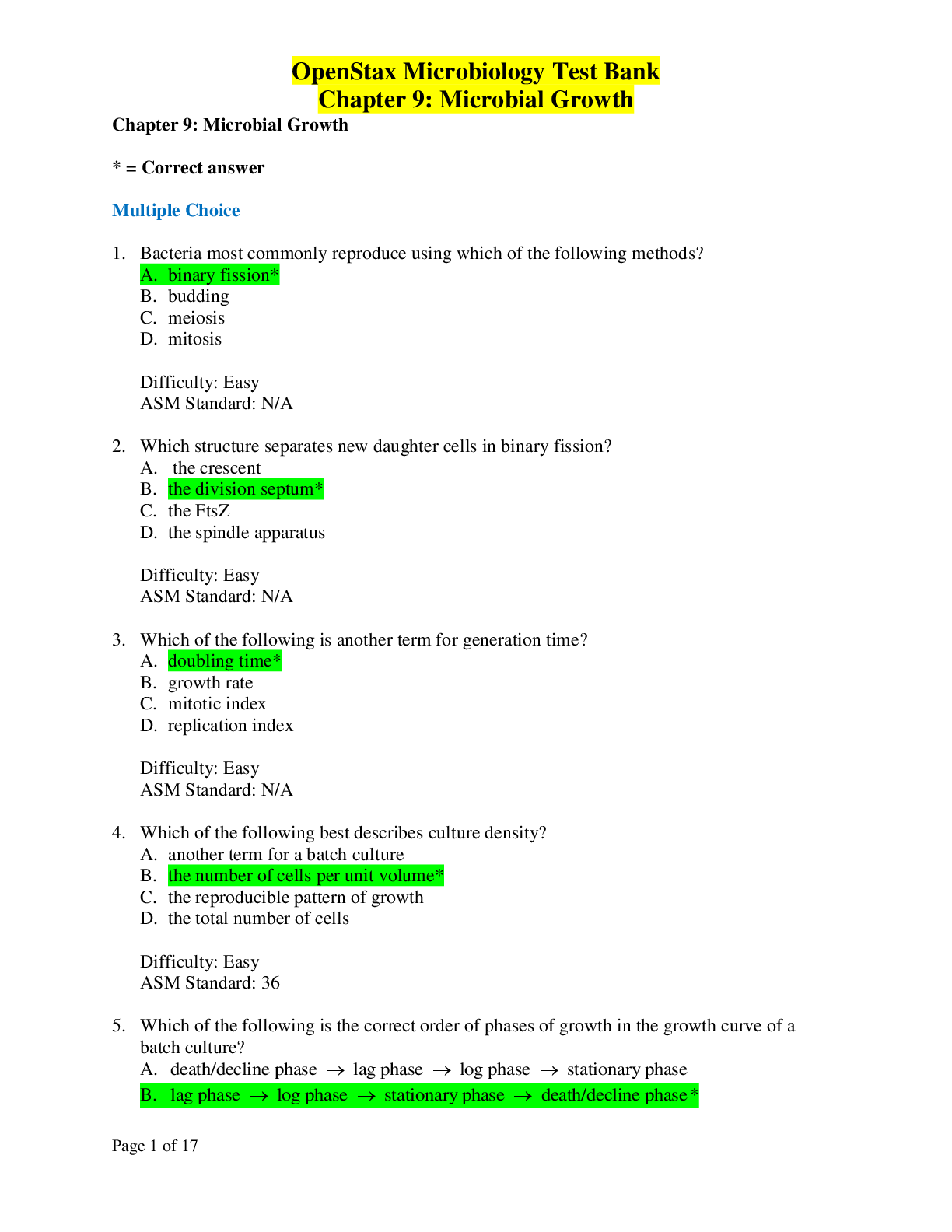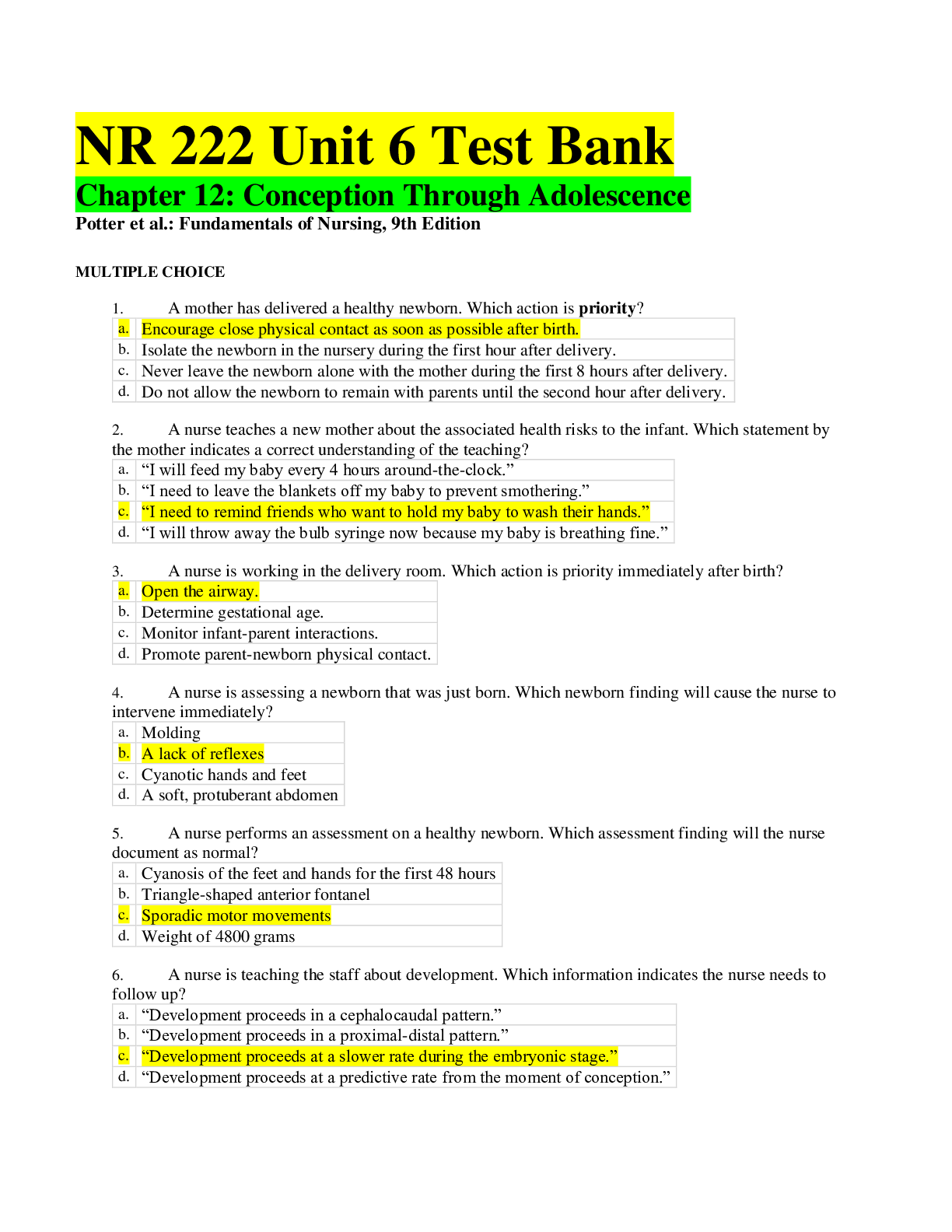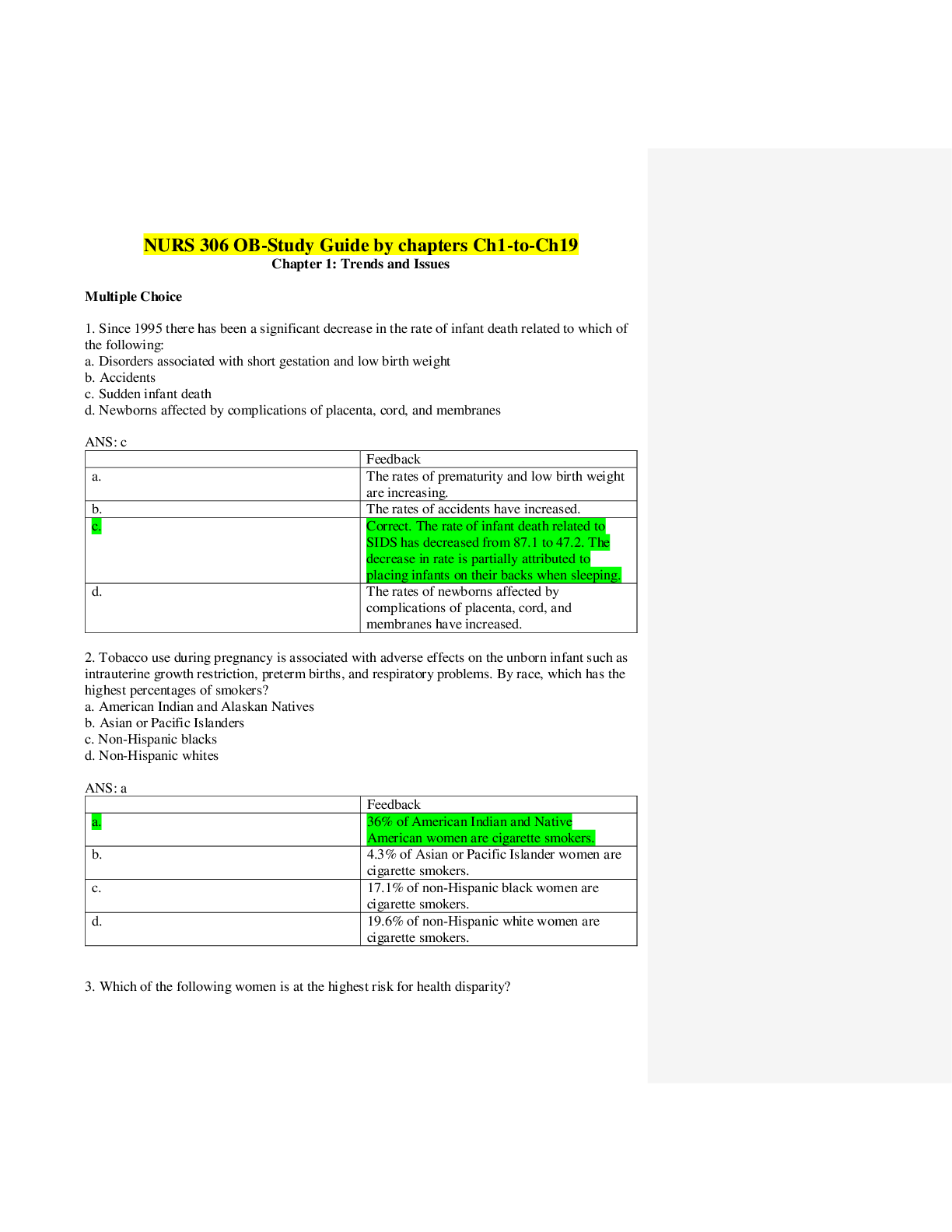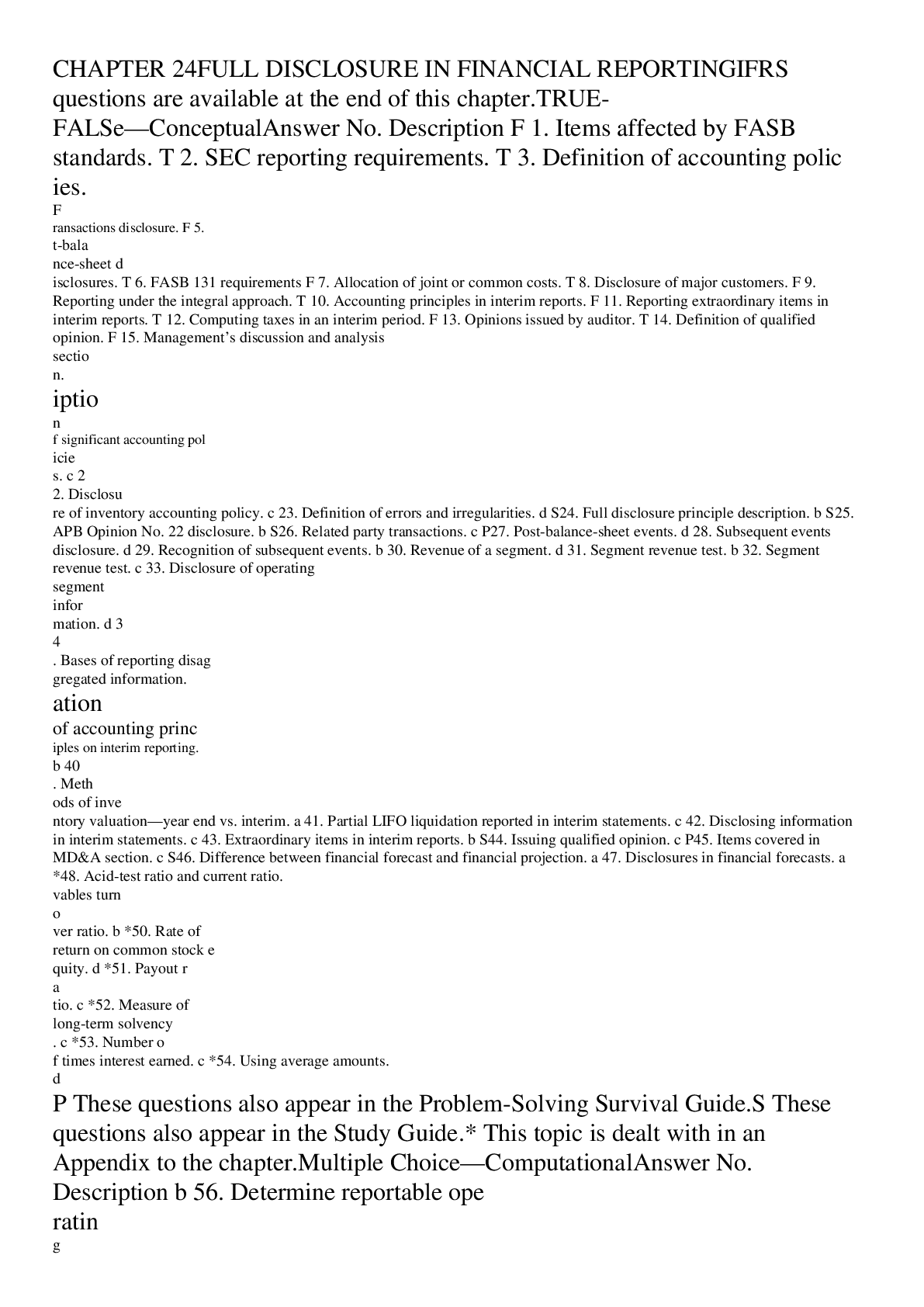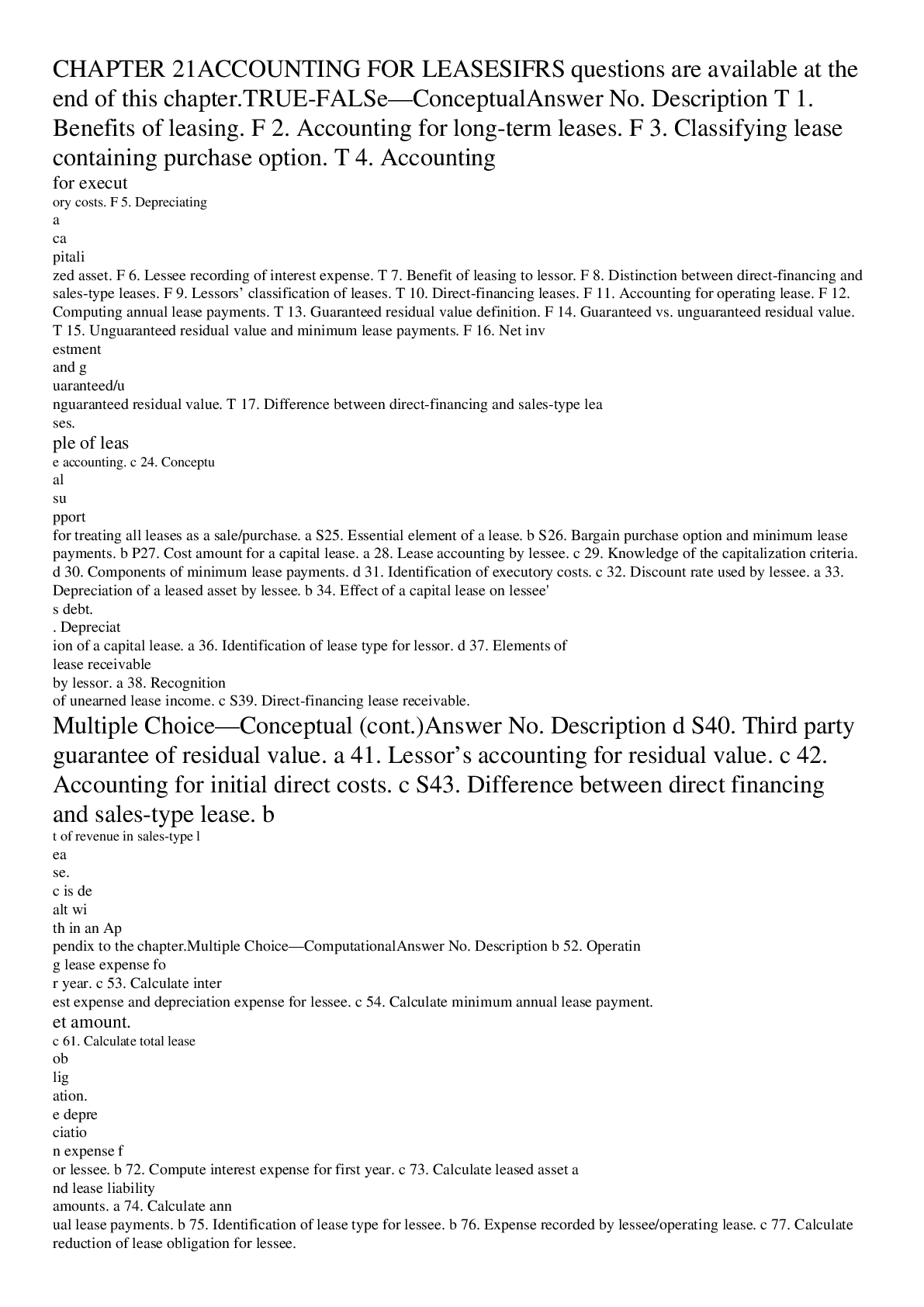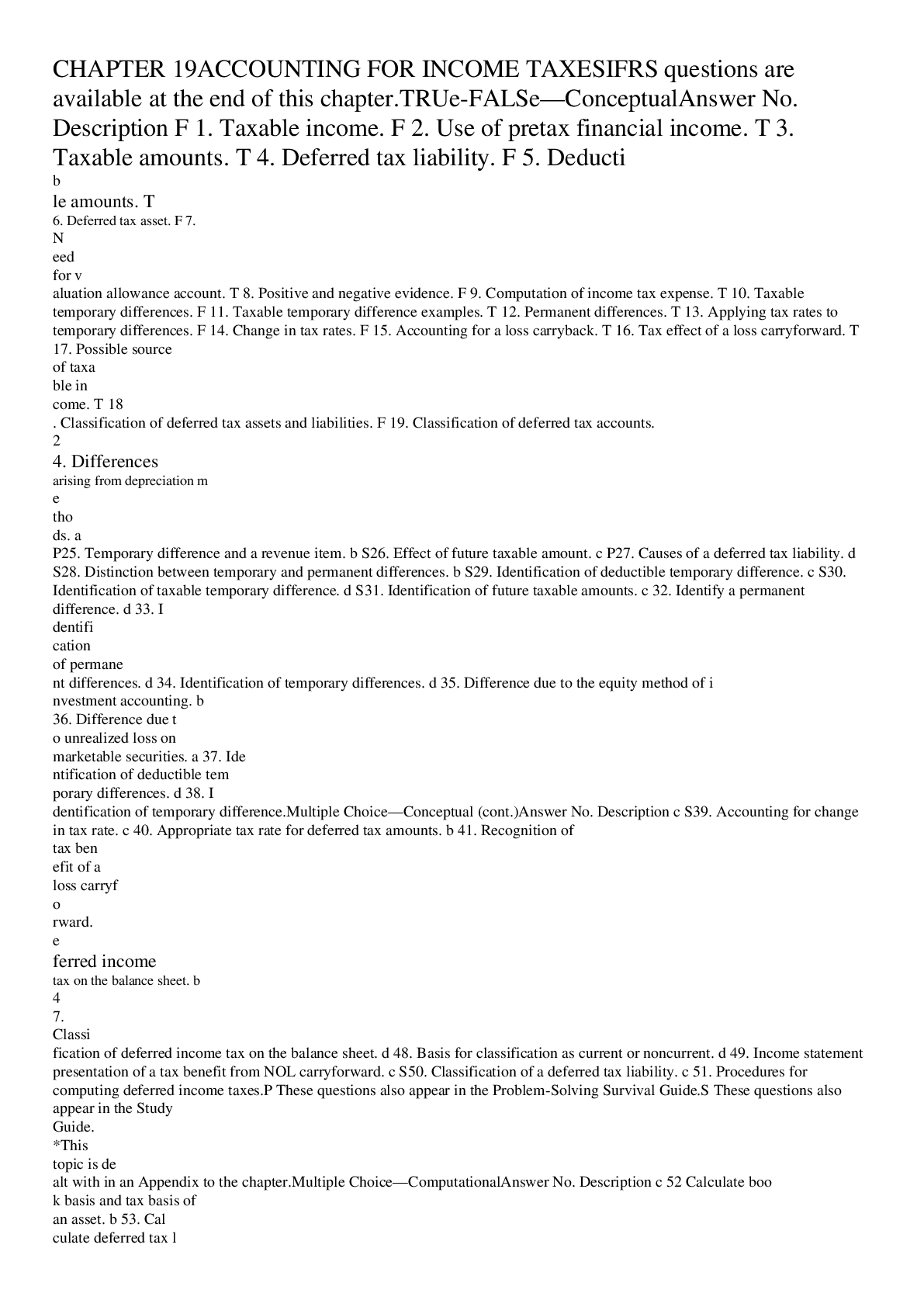*NURSING > QUESTIONS & ANSWERS > Lewis's Medical Surgical Nursing 11th Edition Harding Test Bank Chapter 48: Diabetes Mellitus Q&A 2 (All)
Lewis's Medical Surgical Nursing 11th Edition Harding Test Bank Chapter 48: Diabetes Mellitus Q&A 2023 A+
Document Content and Description Below
Which statement by a nurse to a patient newly diagnosed with type 2 diabetes is accurate? a. Insulin is not used to control blood glucose in patients with type 2 diabetes. b. Complications of type... 2 diabetes are less serious than those of type 1 diabetes. c. Changes in diet and exercise may control blood glucose levels in type 2 diabetes. d. Type 2 diabetes is usually diagnosed when a patient is admitted in hyperglycemic coma. - ANS: C For some patients with type 2 diabetes, changes in lifestyle are sufficient to achieve blood glucose control. Insulin is frequently used for type 2 diabetes, complications are equally severe as for type 1 diabetes, and type 2 diabetes is usually diagnosed with routine laboratory testing or after a patient develops complications such as frequent yeast infections. DIF: Cognitive Level: Understand (comprehension) TOP: Nursing Process: Implementation MSC: NCLEX: Physiological Integrity A patient screened for diabetes at a clinic has a fasting plasma glucose level of 120 mg/dL (6.7 mmol/L). What should the nurse plan to teach the patient? a. Self-monitoring of blood glucose b. Using low doses of regular insulin c. Lifestyle changes to lower blood glucose d. Effects of oral hypoglycemic medications - ANS: C The patient's impaired fasting glucose indicates prediabetes, and the patient should be counseled about lifestyle changes to prevent the development of type 2 diabetes. The patient with prediabetes does not require insulin or oral hypoglycemics for glucose control and does not need to self-monitor blood glucose. DIF: Cognitive Level: Apply (application) TOP: Nursing Process: Planning MSC: NCLEX: Physiological Integrity A 28-yr-old male patient with type 1 diabetes reports how he manages his exercise and glucose control. Which behavior indicates that the nurse should implement additional teaching? a. The patient always carries hard candies when engaging in exercise. b. The patient goes for a vigorous walk when his glucose is 200 mg/dL. c. The patient has a peanut butter sandwich before going for a bicycle ride. d. The patient increases daily exercise when ketones are present in the urine. - ANS: D When the patient is ketotic, exercise may result in an increase in blood glucose level. Patients with type 1 diabetes should be taught to avoid exercise when ketosis is present. The other statements are correct. DIF: Cognitive Level: Apply (application) TOP: Nursing Process: Assessment MSC: NCLEX: Physiological Integrity The nurse is assessing a 22-yr-old patient experiencing the onset of symptoms of type 1 diabetes. To which question would the nurse anticipate a positive response? a. "Are you anorexic?" b. "Is your urine dark colored?" c. "Have you lost weight lately?" d. "Do you crave sugary drinks?" - ANS: C Weight loss occurs because the body is no longer able to absorb glucose and starts to break down protein and fat for energy. The patient is thirsty but does not necessarily crave sugar-containing fluids. Increased appetite is a classic symptom of type 1 diabetes. With the classic symptom of polyuria, urine will be very dilute. DIF: Cognitive Level: Apply (application) TOP: Nursing Process: Assessment MSC: NCLEX: Physiological Integrity A patient with type 2 diabetes is scheduled for a follow-up visit in the clinic several months from now. Which test will the nurse schedule to evaluate the effectiveness of treatment for the patient? a. Fasting blood glucose b. Glycosylated hemoglobin c. Oral glucose tolerance test d. Urine dipstick for glucose and ketones - ANS: B The glycosylated hemoglobin (A1C) test shows the overall control of glucose over 90 to 120 days. A fasting blood level indicates only the glucose level at one time. Urine glucose testing is not an accurate reflection of blood glucose level and does not reflect the glucose over a prolonged time. Oral glucose tolerance testing is done to diagnose diabetes but is not used for monitoring glucose control after diabetes has been diagnosed. DIF: Cognitive Level: Apply (application) TOP: Nursing Process: Planning MSC: NCLEX: Physiological Integrity Continues... [Show More]
Last updated: 1 year ago
Preview 1 out of 19 pages

Buy this document to get the full access instantly
Instant Download Access after purchase
Add to cartInstant download
We Accept:

Reviews( 0 )
$12.50
Document information
Connected school, study & course
About the document
Uploaded On
Feb 21, 2023
Number of pages
19
Written in
Additional information
This document has been written for:
Uploaded
Feb 21, 2023
Downloads
0
Views
39




